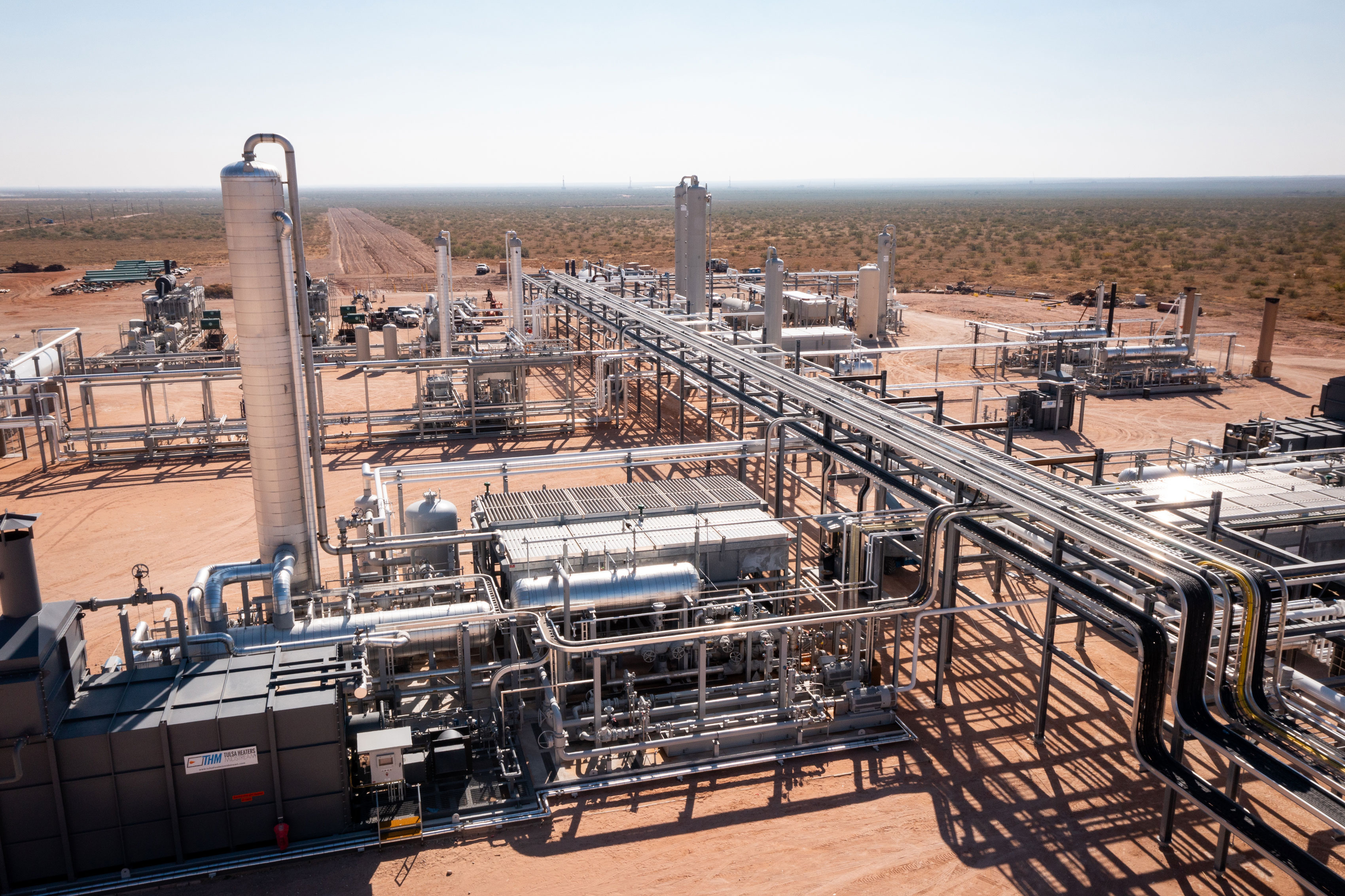Piñon Midstream Secures EPA Approval for Carbon Capture at Dark Horse Facility
(P&GJ) — Piñon Midstream has received approval from the U.S. Environmental Protection Agency (EPA) for its monitoring, reporting, and verification (MRV) plan for the permanent sequestration of carbon dioxide (CO2) at its Dark Horse Treating Facility in Lea County, New Mexico.
This makes it the second facility in New Mexico to receive such approval for non-enhanced oil recovery (non-EOR) geologic sequestration of CO2.
The MRV approval is a significant milestone, enabling Piñon to qualify for 45Q tax credits under the Inflation Reduction Act of 2022. In 2023, Piñon sequestered approximately 100,000 metric tons of CO2 and expects to increase this to over 190,000 metric tons in the next year.
The Dark Horse Treating Facility, the largest acid gas injection (AGI) system in New Mexico, uses two wells—Independence AGI #1 and Independence AGI #2—which reach depths of about 18,000 feet. These wells are permitted to inject a combined 20 million cubic feet per day of CO2 and hydrogen sulfide (H2S), translating to around 250,000 metric tons of CO2 and 110,000 metric tons of H2S annually.
The facility offers Delaware Basin operators a scalable solution to reduce flaring and enhance drilling opportunities. The MRV plan, effective June 15, 2024, outlines the procedures for ensuring permanent sequestration, crucial for Piñon’s tax credit eligibility.
"Piñon was founded to provide sustainable and scalable sour gas infrastructure solutions," said CEO Steven Green. "With EPA approval and our recent capacity expansions, we are poised to lead in sour gas treatment and carbon management in the Delaware Basin."
Since its inception in August 2021, Piñon has captured and permanently sequestered about 160,000 metric tons of CO2 and 65,000 metric tons of H2S, equivalent to the annual emissions of approximately 35,000 vehicles or 21,000 households. The Dark Horse Facility aims to sequester over 190,000 metric tons of CO2 and 90,000 metric tons of H2S in the coming year.
Related News
Related News

- Kinder Morgan Proposes 290-Mile Gas Pipeline Expansion Spanning Three States
- Valero Plans to Shut California Refinery, Takes $1.1 Billion Hit
- Three Killed, Two Injured in Accident at LNG Construction Site in Texas
- Tallgrass to Build New Permian-to-Rockies Pipeline, Targets 2028 Startup with 2.4 Bcf Capacity
- TC Energy Approves $900 Million Northwoods Pipeline Expansion for U.S. Midwest
- EIG’s MidOcean Energy Acquires 20% Stake in Peru LNG, Including 254-Mile Pipeline
- Construction Begins on Ghana's $12 Billion Petroleum Hub, But Not Without Doubts
- Valero Plans to Shut California Refinery, Takes $1.1 Billion Hit
- Newsom Seeks to Aid Struggling Refiners Following Valero’s California Exit
- Argentina's YPF Drops Plan for Land-Based LNG Plant, Will Rely on Floating Facilities





Comments